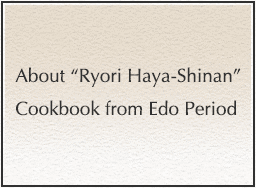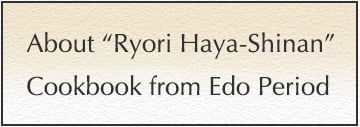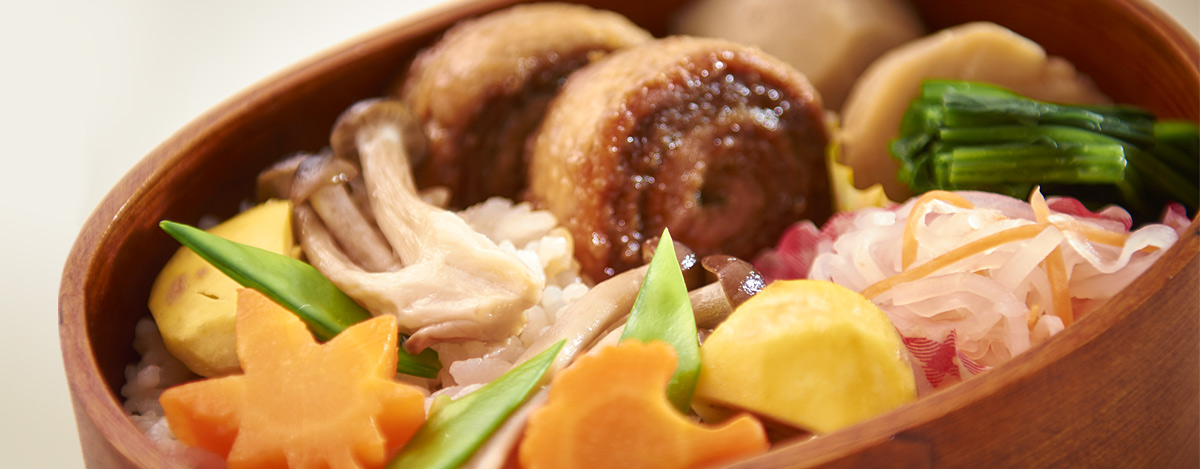

One of the reasons Bento has taken part in Japanese food culture and become popular through out the world is not only its flavor but also the decorative presentation which those who makes Bento thinks about the person who eats it. This sensitivity is the heart of Bento and we can trace back the heart of Bento to 400 years ago when Bento became distinctive culture.
Here, we introduce the ideas we can learn from cookbooks and Bento recipes from 400 years ago. Something still useful when we make Bento today.
"Ryori Haya-Shinan" is a coo book of four volumes. The second volume includes recipes for tiered boxes at seasonal events and other Bentos.
Witten by Daigo Sanjin
Published in 1801

Collection of Oe Library, Tokyo Kasei Gakuin University
Japanese food culture flourished in the Edo period. Many cookbooks and food guides were also published. "Ryori Haya-Shinan" by Daigo Sanjin is one of such cookbooks. The first volume was published in 1801 and sequels followed.
The first volume introduces Honzen, Kaiseki and Shojin cooking. The second volume introduces recipes for tiered boxes at seasonal events such as seasonal greetings and cherry blossom viewing. The third volume includes how to make salted fish and dried fish, Fucha cuisine and Shippoku cooking. The fourth volume talks about soups and vinegary dishes.
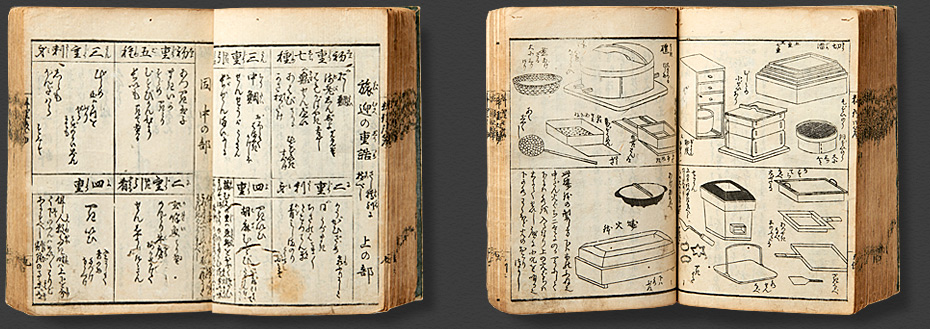
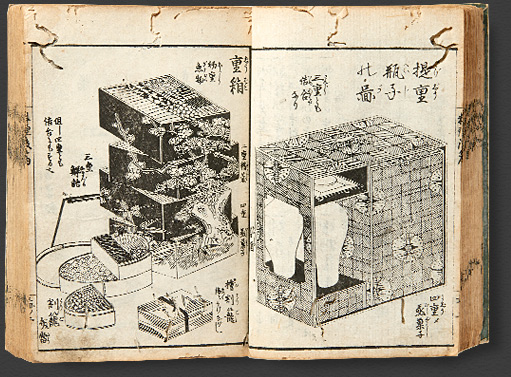
It is said Bento box was invented in the Azuchi Momoyama period but we had to wait till the Edo period till Bento culture became widely accepted. By then, Bento box with compartments was introduced. People started to carry their food in these boxes to cherry blossom viewing, boat rides, doll festivals and various other events. Not only the beautiful appearance but also for sterilizing effect, it was common to use lacquerware for tiered boxes. People packed side dishes in tiered boxes and rice in other containers.
"Ryori Haya-Shinan" talks about how to pack food in tiered boxes.
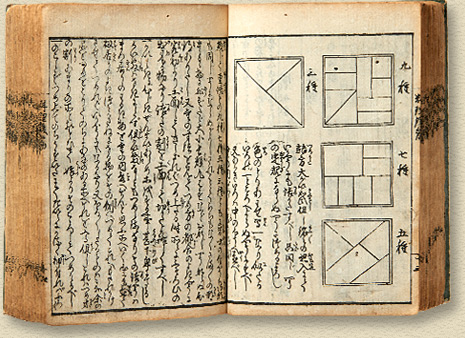
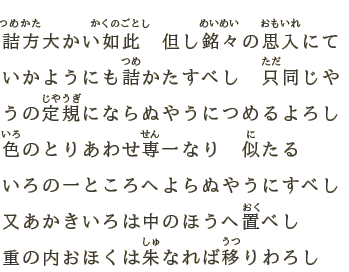
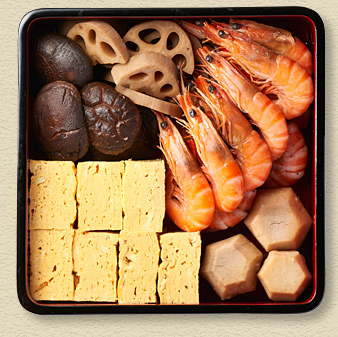
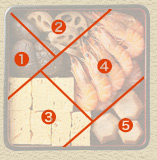
- 1boiled shiitake mushroom
- 2boiled lotus
- 3rolled egg
- 4whole simmered shrimp
- 5taro
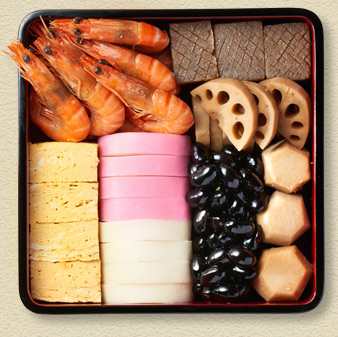
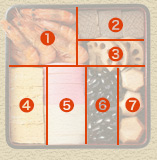
- 1whole simmered shrimp
- 2konjac
- 3boiled lotus
- 4rolled egg
- 5fish minced and steamed
- 6simmered black soy beans
- 7taro
The book notes "it is important not to pack same flavors or same shapes of food next to each other. However, random combination would lack coherence. Plan ahead, having size and portion of the box in mind. Then the size of each food will be determined accordingly. Place solid food first and soft food later. Since most tiered boxes are vermilion-lacquered, red food must be presented in the center of the box".
Colorful and decorative presentation is a characteristic of Japanese food though, the notion of how to present food beautifully was indeed a great consideration even back then.







